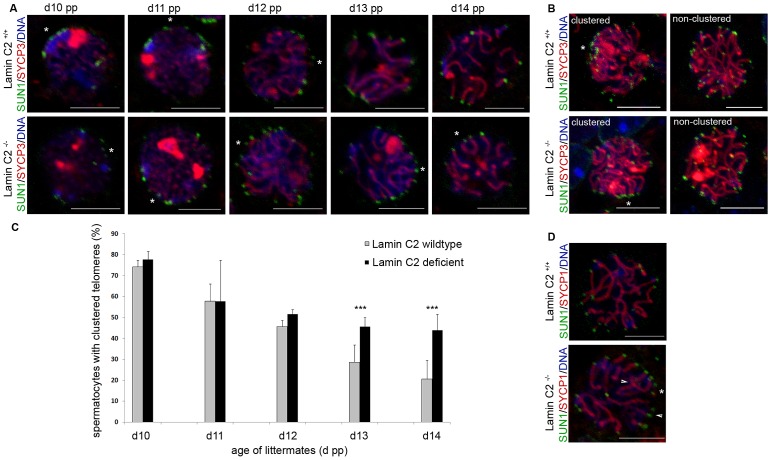Figure 4. Bouquet release is significantly delayed in lamin C2−/− spermatocytes.
(A) Representative wildtype and knockout spermatocytes from testes of 10 to 14 day old mice labelled for SYCP3 and SUN1 with clusters of telomeres indicated by asterisks. Scale bars 5 µm. (B) Z-projections of entire nuclei from wildtype and knockout littermates, labelled again for SYCP3 and SUN1, demonstrating the distinguishable difference between clustered and non-clustered telomere patterns; asterisks indicate telomere clusters. Scale bar 5 µm. (C) Quantitative evaluation of spermatocytes showing clustered telomeres in wildtype and knockout littermates aged 10 to 14 dpp. Note the highly significant differences at ages 13 and 14 dpp. Values represent means (± s.d.) of data from three littermate pairs of wildtype and knockout animals each, separately analysed using Pearson's Chi2 tests: d10 p = 0.28 (wt, n = 517; lamin C2−/−, n = 580); d11 p = 0.15 (wt, n = 677; lamin C2−/−, n = 703); d12 p = 0.29 (wt, n = 736; lamin C2−/−, n = 780); d13 p = 6.5 x10−3 (wt, n = 639; lamin C2−/−, n = 648); d14 p = 7.6 x10−7 (wt, n = 700; lamin C2−/−, n = 682). ***p<0.01 (D) Representative wildtype and lamin C2−/− spermatocytes from day 14 aged mice showing comparable stages of synaptonemal complex assembly as indicated by SYCP1 labelling. Arrowheads denote homologous pairing defects in the absence of lamin C2; the asterisks indicate telomere clustering. Scale bar 5 µm.

